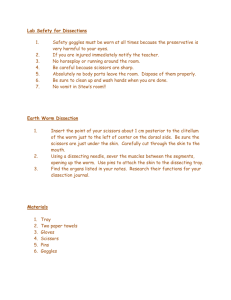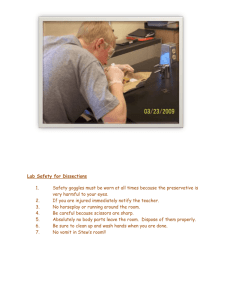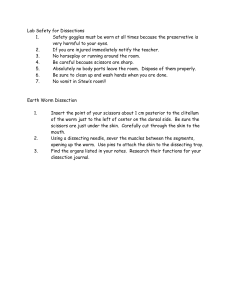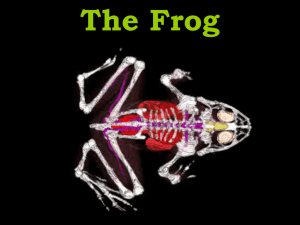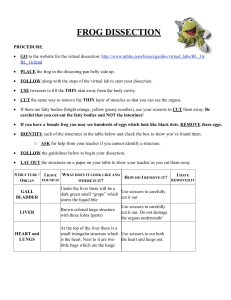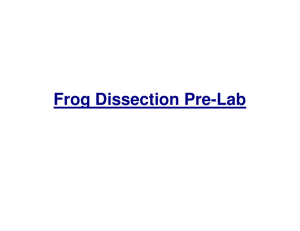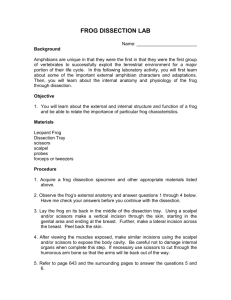Dissection journal
advertisement
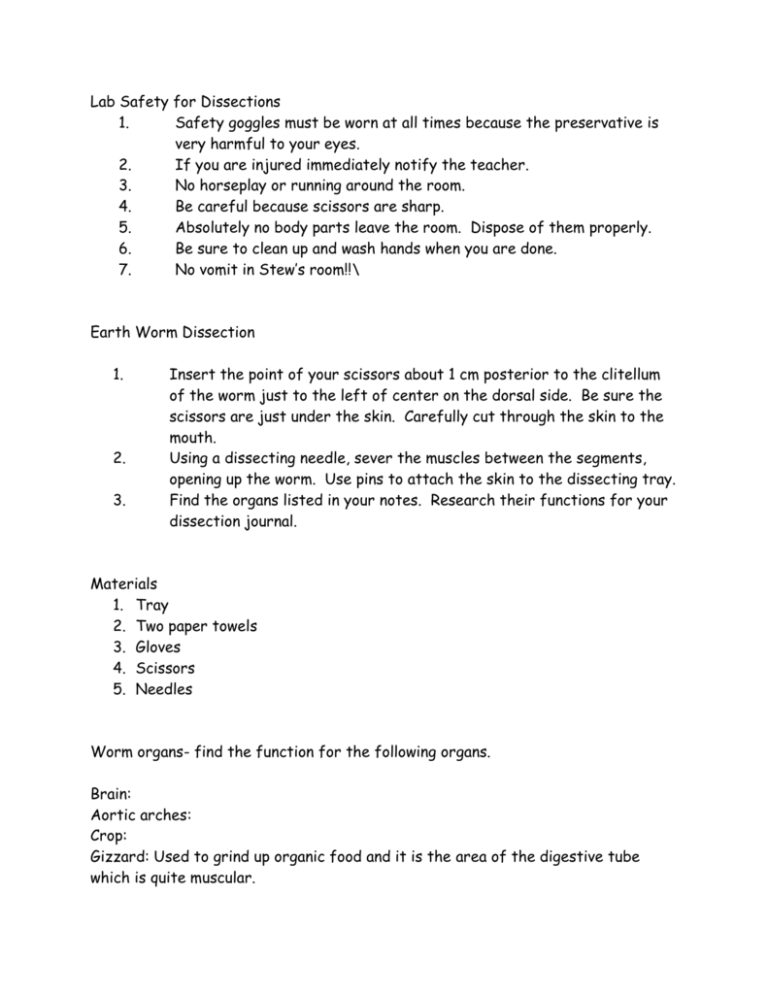
Lab Safety for Dissections 1. Safety goggles must be worn at all times because the preservative is very harmful to your eyes. 2. If you are injured immediately notify the teacher. 3. No horseplay or running around the room. 4. Be careful because scissors are sharp. 5. Absolutely no body parts leave the room. Dispose of them properly. 6. Be sure to clean up and wash hands when you are done. 7. No vomit in Stew’s room!!\ Earth Worm Dissection 1. 2. 3. Insert the point of your scissors about 1 cm posterior to the clitellum of the worm just to the left of center on the dorsal side. Be sure the scissors are just under the skin. Carefully cut through the skin to the mouth. Using a dissecting needle, sever the muscles between the segments, opening up the worm. Use pins to attach the skin to the dissecting tray. Find the organs listed in your notes. Research their functions for your dissection journal. Materials 1. Tray 2. Two paper towels 3. Gloves 4. Scissors 5. Needles Worm organs- find the function for the following organs. Brain: Aortic arches: Crop: Gizzard: Used to grind up organic food and it is the area of the digestive tube which is quite muscular. Intestine: Dorsal blood vessel: The worm is darker on its upper surface. Seminal vesicles: Seminal receptacles: These are only visible when the worm is in reproductive condition. Esophagus: Mouth: Anus: Clitellum: An organ that is responsible for mucus production during reproduction. Skin: Crayfish dissection procedure 1. 2. 3. Observe the external anatomy of the crayfish. Locate the body parts that are external. Is your crayfish a male or a female? How do you know this? Locate the mouth of the crayfish. Observe the live crayfish in the tank. Make a cut in the exoskeleton of the cephalothorax on the dorsal side from the back of the cephalothorax to the rostrum, cutting down the midline. Separate the 2 halves of the exoskeleton to reveal the internal organs. After you find all the internal organs clean up thoroughly. Materials 1. Tray 2. Two paper towels 3. Gloves 4. Scissors 5. Probe Fish dissection procedure 1. 2. Identify all the fins of the fish. Find the lateral line, operculum and gills. Make a cut from the vent on the ventral side of the fish to an area just below the operculum, cutting between the pelvic fins. Then cut up along the operculum to the lateral line. Cut parallel to the lateral line until you are even with the vent, then cut down to the vent and remove the side of the fish. Locate the internal organs and then clean up thoroughly. Fish organs Operculum: Gills: Stomach: Intestine: Liver: Heart: Swim bladder: Eye: Ovaries: Testes: Caudal fin: Dorsal fin: Pectoral fin: Ventral fin: Pelvic fin: Lateral line: Scales: Frog dissection questions: 1. How many chambers does a frog heart have? 2. How many chambers does a human heart have? 3. Which heart is more efficient, and why does it have to be more efficient? 4. Why does a frog have such small lungs? 5. How is the tongue of a frog attached in its mouth and why is it attached like this. 6. Why is a frog classified as the following? a. ectotherm b. amphibian c. chordate d. animal e. heterotroph 7. Why are amphibian populations declining, and what can we do to save them? 8. Explain how a frog is camouflaged. 9. Is a frog an herbivore, omnivore or carnivore? Explain your answer. 10. Why do scientists dissect organisms? Frog organs Skin Lungs Heart Brain Ovaries Testes Tongue Cloaca Spleen Pancreas Stomach Small intestine Large intestine Liver Gall bladder Kidney Bladder Fat Bodies
